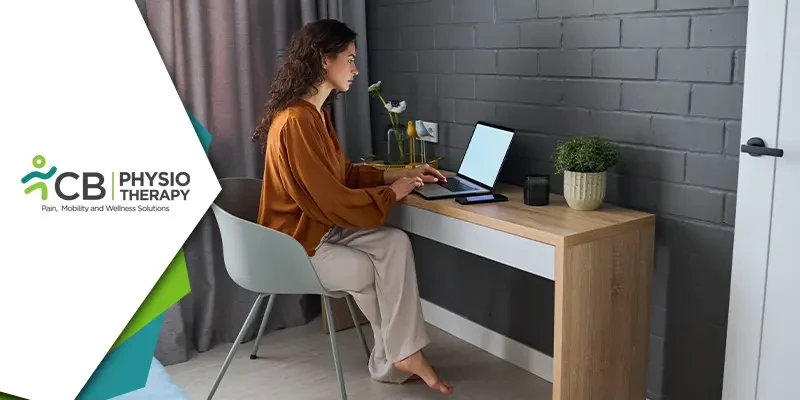Do you feel discomfort and pain while working in your office and want to minimize this uneasiness? If yes, then you should go through this blog to ease yourself and produce a more productive workplace. In this blog, we will explore ergonomics, which is the study of the science of designing and arranging things in a way that minimizes the risk of injury and promotes efficiency. Ergonomics includes a wide variety of studies ranging from the ergonomics of office furniture and equipment to ergonomic techniques for manual labor. Whether you're an office worker, a manual laborer, or someone looking to improve posture and comfort at home, this blog will help you to improve your overall well-being and productivity.
Ergonomics is the study of how people interact with their environment, specifically with the design of equipment and system around them. It is essential to consult a physiotherapist who can well explain the importance of ergonomics in the workplace, and provide tips and strategies for creating a more ergonomic environment for the employees. In a workplace, ergonomics is essential for maintaining the health and well-being of employees for a safer, more comfortable, and more productive environment. Ergonomics helps to fit the human body into a healthy working environment and is especially important for desk-bound workers.
Tips to help you create an ergonomic workspace:
Chair:
Use a chair that supports your lower back and allows you to sit with your feet flat on the floor. Look for chairs with adjustable armrests and lumbar support. The chair should support your lower back and allows you to keep your feet flat on the floor.
Computer:
Position your computer monitor so that the top of the screen is at your eye level. This will help reduce strain on your neck and eyes. Keep the monitor about arm's length away from you.
Keyboard:
Place your keyboard and mouse at the same level, and use a wrist rest to support your hands while typing. Position your keyboard and mouse so that your wrists are in a neutral position.
Regular breaks:
Take regular breaks to stretch and move around. Set a reminder on your phone or computer to remind you to stand up and stretch every hour. Take frequent breaks to stand up and stretch.
Speakerphone or headset:
Use a headset or speakerphone instead of holding the phone between your shoulder and ear. Adjust the contrast and brightness of your monitor to reduce eye strain.
Standing desk:
Consider using a standing desk or a sit-stand desk, which allows you to adjust the height of your work surface to accommodate both sitting and standing positions.
Document holder:
Use a document holder to reduce neck and eye movement. Keep frequently used items within easy reach to minimize reaching and twisting.
Footrest:
Use a footrest to support your feet and reduce pressure on your lower back.
Strategies for implementing ergonomic changes in the workplace include:
- Gradually make changes to your workstation over time, rather than trying to make everything perfect at once. Involve your employer or IT department in the process to make sure that you have the necessary equipment and support.
- Setting reminders to take breaks, and do some stretches throughout the day. Ask a physiotherapist or ergonomics expert to evaluate your workstation and make recommendations. By following these tips, you can help prevent discomfort and injury and increase your productivity and well-being.
Another thing you can do to reduce stress and keep yourself healthy is by strengthening your body by sleeping enough and maintaining fitness by exercising, This makes your body less prone to the negative effects of using a computer or desk for a prolonged time.

